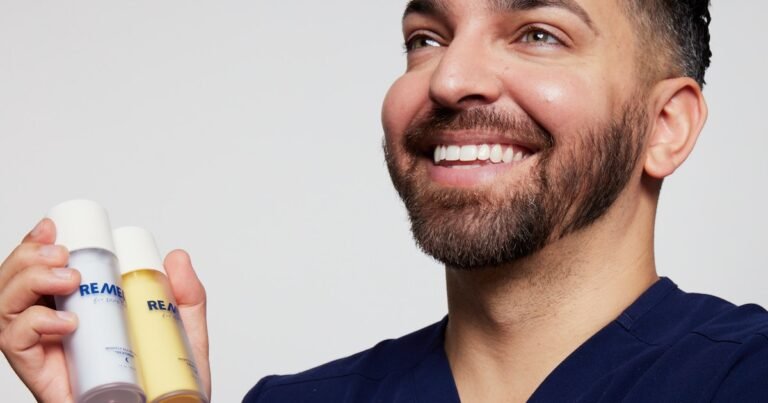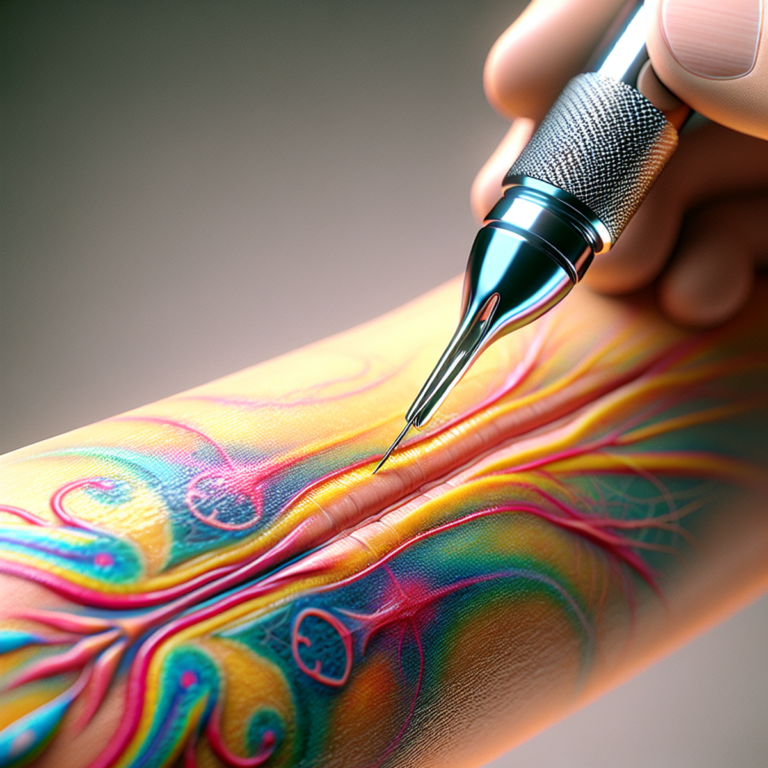How to get rid of acne scars: Treatments and home remedies

Introduction
Acne scars can have a profound impact on self-esteem, leading many to seek effective solutions for treatment. In this article, we will explore various aspects of addressing acne scars, including medical treatments, home remedies, prevention measures, and factors influencing treatment effectiveness.
Here’s an overview of the topics we’ll cover:
- Understanding Acne Scars: Different types and underlying causes
- Medical Treatments: Topical treatments, procedures, surgical interventions, and combination therapies
- Home Remedies and Self-Care: Natural remedies and over-the-counter products
- Prevention Measures: Strategies to avoid acne scarring
- Factors Affecting Treatment: The influence of scar type and individual responses
Remember, while there are numerous options available for addressing acne scars, it’s crucial to seek personalized advice from a dermatologist for the most suitable treatment plan.
Understanding Acne Scars
Acne scars can have a significant impact on self-esteem and the desire to find effective solutions. Understanding the nature of acne scars is crucial in order to choose the appropriate treatment approach. In this section, we will define what acne scars are, explain the different types of acne scars, and discuss their underlying causes.
What are Acne Scars?
Acne scars are permanent changes in the texture and appearance of the skin that occur as a result of inflammatory acne lesions. These scars are distinct from post-inflammatory hyperpigmentation (PIH), which refers to temporary darkening of the skin after an acne breakout. Unlike PIH, which fades over time, acne scars are long-lasting and may require specific treatments for improvement.
Types of Acne Scars
There are several types of acne scars, each with its own characteristics and treatment considerations. The most common types include:
- Atrophic Scars: These scars result from a loss of tissue and collagen in the skin. Atrophic scars can be further classified into three subtypes:
- Ice Pick Scars: Characterized by narrow, deep pits that resemble puncture marks on the skin.
- Rolling Scars: These scars create a wave-like appearance on the skin due to tethering of scar tissue beneath the surface.
- Boxcar Scars: Boxcar scars have well-defined edges and appear as broad depressions with sharp vertical sides.
- Hypertrophic Scars: Unlike atrophic scars, hypertrophic scars involve an overgrowth of collagen during the healing process. These raised or elevated scars are more common on the chest, back, shoulders, and jawline.
Causes of Acne Scarring
Acne scarring occurs due to various factors related to inflammation, collagen damage, and abnormal healing processes. During an acne breakout, inflammation triggers an immune response that can damage collagen fibers in the skin. When the skin attempts to repair itself, the healing process may result in the formation of scars.
Factors that contribute to acne scarring include:
- Severity of Acne: Severe acne lesions, such as nodules and cysts, are more likely to cause scarring than milder forms of acne.
- Delayed or Inadequate Treatment: Failure to treat acne in its early stages or using ineffective treatments can increase the risk of scarring.
- Genetic Predisposition: Some individuals may have a genetic predisposition to developing more severe scars due to their skin’s response to inflammation.
- Picking or Squeezing Acne Lesions: Manipulating acne lesions by picking or squeezing them can further damage the skin and increase the likelihood of scarring.
Understanding the different types of acne scars and their underlying causes is essential for developing an effective treatment plan. In the next section, we will explore various medical treatments available for addressing acne scars, including topical treatments, procedures, surgical interventions, and combination therapies. Remember, it is always important to consult with a dermatologist for personalized advice based on your specific needs.
Medical Treatments for Acne Scars
When it comes to treating acne scars, medical interventions can play a crucial role in achieving smoother and more even-toned skin. Topical treatments are one of the primary options for addressing acne scars. These treatments are applied directly to the skin and work by promoting cell turnover and reducing pigmentation. Here’s an overview of how topical treatments can help improve the appearance of acne scars:
- Retinoids: Retinoids are derivatives of vitamin A and are commonly used in skincare for their ability to increase cell turnover. By speeding up the rate at which skin cells renew themselves, retinoids can help fade acne scars over time. They also have anti-inflammatory properties that can reduce redness associated with scarring.
- Hydroquinone: Hydroquinone is a skin-lightening agent that can be effective in reducing the appearance of post-inflammatory hyperpigmentation (PIH), a type of acne scar characterized by dark spots or patches on the skin. It works by inhibiting the production of melanin, the pigment responsible for skin coloration.
- Corticosteroids: Corticosteroids are powerful anti-inflammatory medications that can be injected directly into raised or hypertrophic scars to help flatten them and reduce redness and inflammation. These injections work by suppressing the immune response that contributes to scar formation.
It’s important to note that while topical treatments can be beneficial for mild to moderate acne scars, they may not be as effective for deeper or more severe scars. In such cases, other medical interventions may be necessary.
Procedures for Acne Scar Treatment
When it comes to medical treatments for acne scars, there are various procedures available that can help improve their appearance. These procedures are typically performed in clinics and are designed to target specific types of acne scars. Here are some commonly used procedures for treating acne scars:
- Laser Resurfacing: Laser resurfacing is a popular procedure that uses laser technology to remove the outer layer of the skin, stimulating collagen production and reducing the appearance of acne scars. This treatment can be effective for both atrophic and hypertrophic scars. Recovery periods can vary depending on the intensity of the laser used.
- Dermabrasion: Dermabrasion involves using a rotating instrument to gently exfoliate the top layer of the skin, allowing new skin to regenerate and minimize the appearance of acne scars. This procedure is particularly effective for shallow scars and can require several sessions for optimal results. Recovery time may vary depending on the depth of treatment.
- Chemical Peels: Chemical peels involve applying a chemical solution to the skin, which causes controlled exfoliation and stimulates collagen production. This procedure can help reduce the appearance of superficial acne scars by promoting skin cell turnover. Recovery periods depend on the type and strength of the peel used.
- Microneedling: Microneedling is a procedure that involves using tiny needles to create micro-injuries in the skin, stimulating collagen production and improving overall skin texture. This treatment can be effective for atrophic scars and may require multiple sessions for optimal results. Recovery time is usually minimal.
It’s important to note that these procedures should only be performed by trained professionals, such as dermatologists or plastic surgeons, who have experience in treating acne scars. Each procedure has its own mechanisms and recovery periods, so it’s crucial to consult with a healthcare provider to determine which option is best suited for your specific type of acne scars.
3. Surgical Interventions for Acne Scars
Surgical interventions are usually recommended for more severe cases of acne scarring, where other medical treatments may not give the desired results. These procedures aim to significantly improve the appearance of the skin by treating deep or extensive scarring. Some of the surgical options for acne scars include:
- Punch Excision: This technique involves removing individual pitted scars and repairing the skin with sutures. It is often used for deep ice pick scars.
- Subcision: In this procedure, the fibrotic bands beneath the scar are released, allowing the skin to elevate and create a smoother surface.
- Grafting: For large or deep scars, skin grafting may be recommended to replace scarred tissue with healthy skin from another part of the body.
These surgical interventions are usually considered when other treatments have not produced satisfactory improvements, or when the scarring is particularly extensive or profound. However, it’s important to consult with a dermatologist or a qualified skincare professional to determine the most suitable approach for individual cases of acne scarring.
4. Combination Therapies for Acne Scar Treatment
When it comes to treating acne scars, using multiple medical treatments together can greatly improve the overall results. By combining different approaches, it’s possible to target various aspects of scarring and achieve better outcomes for people dealing with acne scars.
Why Combine Treatments?
Here are some reasons why combination therapies are effective for acne scar treatment:
- Synergistic Effects: Combining treatments such as retinoids, hydroquinone, and corticosteroids with procedures like microneedling with platelet-rich plasma (PRP) or fractional laser with PRP can create synergistic effects. These combinations work together to address different aspects of scarring, including pigmentation, collagen production, and skin texture.
- Customized Approach: Each individual’s acne scars are unique, and a customized combination approach allows dermatologists to tailor the treatment specifically to the type and severity of the scars. This personalized strategy can lead to more targeted and effective results.
- Comprehensive Healing: By utilizing a combination of treatments, it’s possible to achieve comprehensive healing that addresses both superficial and deep-seated scarring. This approach can result in more holistic improvements in skin appearance and texture.
- Maximizing Results: Combination therapies offer the potential to maximize treatment outcomes by capitalizing on the strengths of each approach. This comprehensive method can lead to enhanced overall effectiveness in managing acne scars.
The Benefits of Combination Therapies
Incorporating a combination of medical treatments and procedures provides a multifaceted approach to addressing acne scars, offering promising possibilities for individuals seeking comprehensive scar management solutions.
Home Remedies and Self-Care for Acne Scars
1. Natural Remedies
When it comes to addressing acne scars at home, natural remedies can be an appealing option for many individuals. Several popular natural ingredients are often recommended for treating acne scars, each with its own unique properties and potential benefits:
- Black Seed Oil: Known for its anti-inflammatory and antioxidant properties, black seed oil is believed to help reduce the appearance of acne scars. It contains thymoquinone, which may contribute to its skin-regenerating effects.
- Rosehip Oil: Rich in vitamins A and C, as well as essential fatty acids, rosehip oil is favored for its potential to promote skin regeneration and improve the appearance of scars. Its hydrating and nourishing qualities are also beneficial for overall skin health.
- Honey: Renowned for its antimicrobial and wound-healing properties, honey has been used for centuries in skincare. When applied topically, it may help soothe the skin and support the natural healing process.
- Aloe Vera: Widely recognized for its soothing and moisturizing abilities, aloe vera is often recommended for addressing various skin concerns, including acne scars. It contains compounds that can aid in skin repair and rejuvenation.
When using natural remedies for acne scars, it’s important to be cautious and do a patch test before applying them widely to reduce the risk of adverse reactions. While these remedies have shown promise for some individuals, results can vary, and it’s essential to have realistic expectations when trying out home-based treatments.
2. Over-the-Counter Products
When it comes to managing mild acne scarring at home, over-the-counter (OTC) products can be valuable allies in your skincare routine. These products are easily accessible and can contribute to improving the appearance of acne scars through various mechanisms. Here are some OTC products commonly recommended for addressing mild acne scarring:
- Salicylic Acid Peels: These peels work by exfoliating the skin and unclogging pores, which can help diminish the appearance of superficial acne scars over time.
- Retinoids: Over-the-counter retinoid formulations, such as adapalene, can aid in promoting skin cell turnover and stimulating collagen production, which may gradually improve the texture of acne scars.
- Alpha Hydroxy Acids (AHAs): AHAs, like glycolic acid and lactic acid, contribute to exfoliation and skin renewal, potentially leading to a reduction in the visibility of minor acne scars.
By incorporating these OTC products into your skincare regimen, you can take proactive steps towards addressing mild acne scarring from the comfort of your home. However, it’s essential to use these products as directed and remain patient, as visible improvements may take time to manifest. Always perform a patch test before using new products to minimize the risk of adverse reactions.
Prevention Measures to Avoid Acne Scarring
1. Early Acne Treatment
Addressing acne promptly can minimize the risk of developing severe scars. Effective acne management, whether through over-the-counter products or prescription medications, can prevent the formation of deep scars.
2. Gentle Skincare Practices
Encouraging gentle skincare habits, such as using non-comedogenic products and avoiding aggressive scrubbing, can help prevent exacerbation of existing acne and reduce the likelihood of scarring.
By taking proactive measures to manage acne and adopting a gentle approach to skincare, individuals can significantly reduce the potential for long-term scarring.
Factors to Consider for Effective Acne Scar Treatment
When it comes to treating acne scars, there are several factors that need to be taken into consideration in order to achieve effective results. These factors include the specific type of acne scar, the individual’s skin type, and the chosen acne scar treatment method.
1. Specific Type of Acne Scar
The type of acne scar plays a crucial role in determining the most suitable treatment approach. There are different types of acne scars, including atrophic scars (such as ice pick, rolling, and boxcar scars) and hypertrophic scars. Each type has its own characteristics and requires a tailored treatment strategy.
Ice pick scars
These are deep and narrow scars that resemble small holes or punctures in the skin. They can be difficult to treat and often require more aggressive approaches such as laser resurfacing or punch excision.
Rolling scars
These scars have a wavy or undulating appearance and are caused by the tethering of the skin below the surface. Treatments like subcision or dermal fillers may be effective in improving their appearance.
Boxcar scars
Boxcar scars are characterized by their sharp edges and shallow depth. They can be treated with procedures like chemical peels, microdermabrasion, or laser resurfacing.
2. Skin Type and Treatment Response
Another important factor to consider is an individual’s skin type. Different skin types may respond differently to certain acne scar treatments, so it’s essential to take this into account for optimal results. Here are some general considerations based on different skin types:
- Dry or sensitive skin: People with dry or sensitive skin may benefit from gentle treatments that minimize irritation and inflammation. Options such as chemical peels with lower concentrations, microneedling with minimal downtime, or topical treatments containing soothing ingredients like aloe vera can be suitable choices.
- Oily or acne-prone skin: Individuals with oily or acne-prone skin may require treatments that target excessive sebum production and help control breakouts. Procedures such as laser therapy, chemical peels with salicylic acid, or topical retinoids can be effective in these cases.
- Dark or pigmented skin: Darker skin types have a higher risk of developing post-inflammatory hyperpigmentation (PIH) after acne or scar treatments. It’s important to choose treatments that minimize this risk, such as using gentle procedures with shorter recovery periods or topical products formulated for sensitive skin.
3. Individualized Approaches
Due to the unique combination of scar type and skin type, it is crucial to adopt an individualized approach to acne scar treatment. What works for one person may not work for another, so it’s important to consult with a dermatologist who can assess your specific condition and recommend the most suitable treatment options.
By considering the specific type of acne scar, the individual’s skin type, and the need for personalized approaches, you can enhance the effectiveness of your acne scar treatment. Remember that each person’s journey to clear and smooth skin is unique, and finding the right treatment plan may require some trial and error.
When to Seek Professional Help: Consult a Dermatologist
- Encourage readers to consult with a dermatologist or skincare professional for a comprehensive evaluation of their acne scars and tailored treatment recommendations.
- It’s essential to seek professional help when dealing with acne scars, as a dermatologist can provide personalized guidance and treatment plans based on your specific skin type and scar severity. Consulting a skincare professional ensures that you receive expert advice and have access to the most effective medical treatments available. A dermatologist can accurately assess the type of acne scars you have and recommend the most suitable procedures or topical products for your individual needs.
- Dermatologists are trained to identify the various types of acne scars and understand the most appropriate methods for addressing them. Their expertise can significantly impact the success of your scar treatment, ensuring that you receive optimal care and achieve the best possible results. By consulting a dermatologist, you can benefit from their in-depth knowledge of advanced procedures and medical interventions that may not be readily available or suitable for self-administration.
- Remember that seeking professional help is an important step in your journey toward smoother, clearer skin. The guidance of a dermatologist can make a significant difference in the effectiveness of your acne scar treatment, ultimately helping you regain confidence in your skin’s appearance.
Conclusion
To effectively address acne scars, it’s important to remember these key points:
- Medical treatments such as laser therapy, chemical peels, and microneedling can help reduce the appearance of scars.
- Home remedies like using topical creams with ingredients such as retinol and vitamin C may also be beneficial in improving skin texture.
- Preventive care strategies such as wearing sunscreen daily and avoiding picking or squeezing acne can prevent further scarring.
By combining these approaches, you can give your skin the best chance at healing and minimizing acne scars.
Remember:
It’s essential to consult with a dermatologist or skincare professional who can assess your specific needs and recommend appropriate treatments.
Patience is key when it comes to treating acne scars. Results may not be immediate, but with consistent care and the right products, you can achieve smoother, more even-toned skin over time.
Take charge of your acne scar journey today!










